背景
RR隔离级别是否能够阻止幻读
mysql> select @@global.transaction_isolation,@@transaction_isolation;
+--------------------------------+-------------------------+
| @@global.transaction_isolation | @@transaction_isolation |
+--------------------------------+-------------------------+
| REPEATABLE-READ | REPEATABLE-READ |
+--------------------------------+-------------------------+
1 row in set (0.00 sec)
mysql> desc test_table;
+-----------+-------------+------+-----+---------+-------+
| Field | Type | Null | Key | Default | Extra |
+-----------+-------------+------+-----+---------+-------+
| id | bigint | NO | PRI | NULL | |
| user_name | varchar(50) | YES | | NULL | |
+-----------+-------------+------+-----+---------+-------+
2 rows in set (0.01 sec)
实验A:
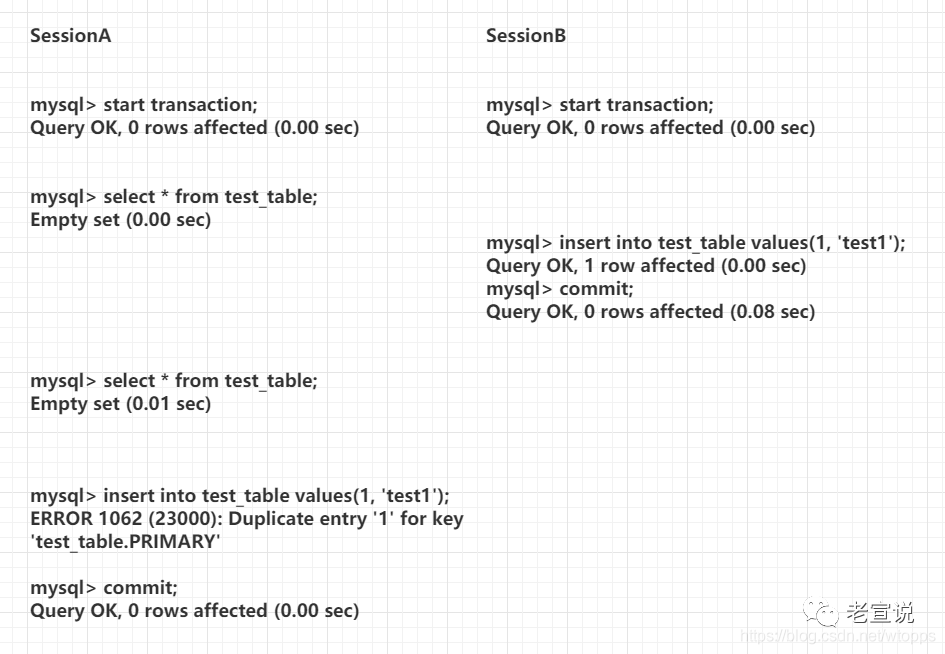
实验B:
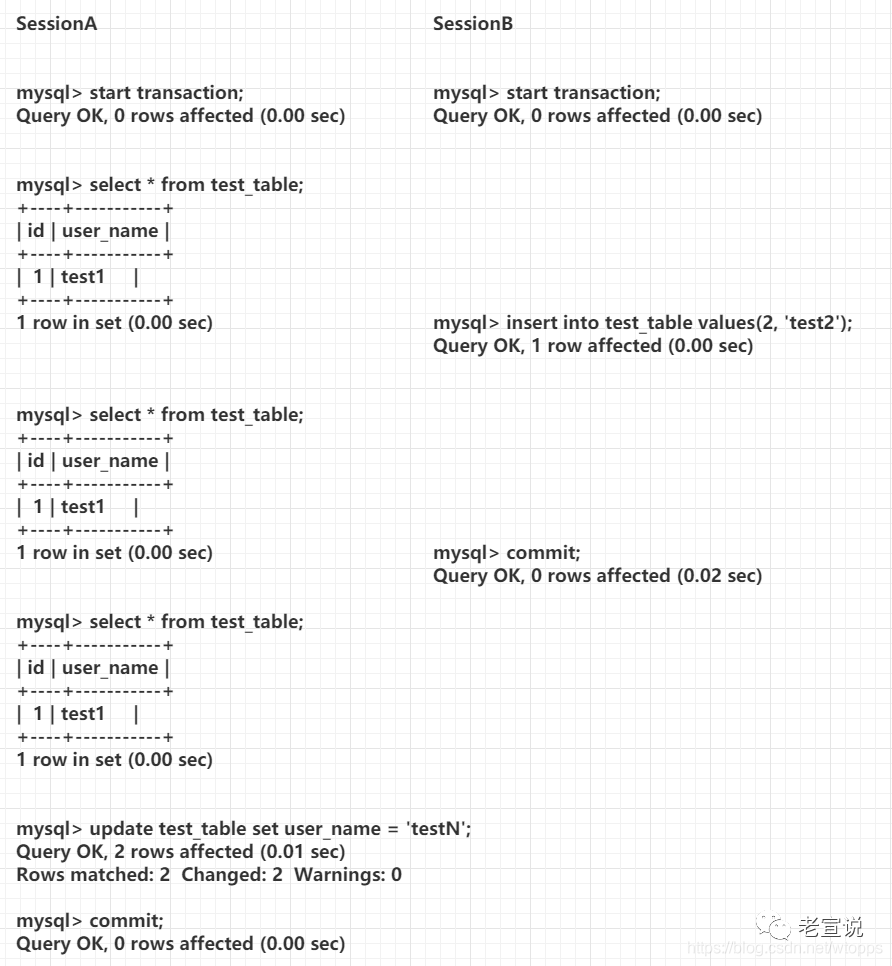
本事务中第一次读取出一行,做了一次更新后,另一个事务里提交的数据就出现了。也可以看做是一种幻读。
MySQL InnoDB如何定义幻读
幻读(phantom)的定义:
https://dev.mysql.com/doc/refman/8.0/en/innodb-next-key-locking.html
The so-called phantom problem occurs within a transaction when the same query produces
different sets of rows at different times.
For example, if a SELECT is executed twice, but returns a row the second time
that was not returned the first time, the row is a “phantom” row.
幻读(phantom)的定义是:如果在一个事务中,在不同的时间执行查询返回的结果不同,则称为
幻读(phantom)。
By default, InnoDB operates in REPEATABLE READ transaction isolation level.
In this case, InnoDB uses next-key locks for searches and index scans,
which prevents phantom rows (see Section 15.7.4, “Phantom Rows”).
next-key locks可以避免
幻读(phantom)。
在快照读情况下,MySQL通过MVCC来避免幻读。 在当前读情况下,MySQL通过next-key来避免幻读。
“读”与“读”的区别
快照读:就是select
select * from table ….;当前读:特殊的读操作,插入/更新/删除操作,属于当前读,处理的都是当前的数据,需要加锁。
select * from table where ? lock in share mode;
select * from table where ? for update;
insert;
update ;
delete;
MySQL InnoDB的Next-Key Locks
next-key locks来避免幻读。
next-key locks?
A next-key lock is a combination of a record lock on the index record
and a gap lock on the gap before the index record.
InnoDB performs row-level locking in such a way that when it searches or scans a table index,
it sets shared or exclusive locks on the index records it encounters.
Thus, the row-level locks are actually index-record locks.
A next-key lock on an index record also affects the “gap” before that index record.
That is, a next-key lock is an index-record lock plus a gap lock on the gap preceding the index record.
If one session has a shared or exclusive lock on record R in an index,
another session cannot insert a new index record in the gap immediately before R in the index order.
next-key locks是一种间隙锁,相较于行锁只锁定一行,它会锁定一个区间范围,加锁的范围区间内的索引键值会被锁定,其使用方式如下:
SELECT * FROM child WHERE id > 100 FOR UPDATE;
FOR UPDATE语句后,则从快照读变为了当前读。
next-key locks的定义和使用方式,我们再来做两个实验验证一下是否是这样子的。
实验C:
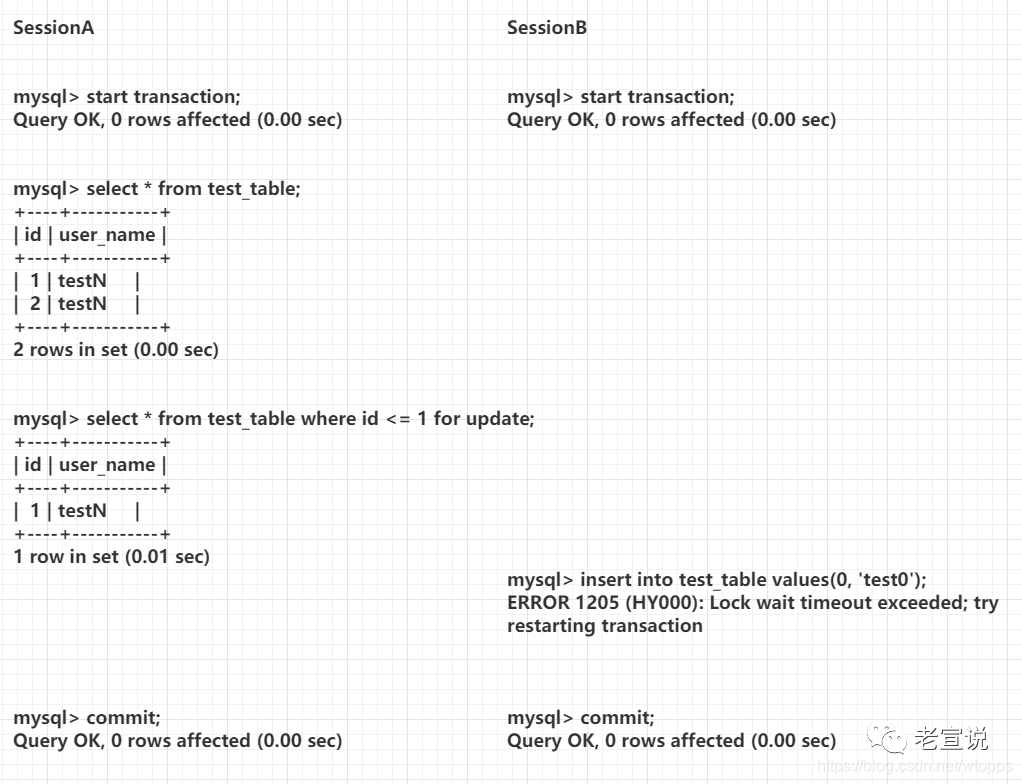
可以看到,我们对
id<=1的范围进行了加锁,
insertid为0的记录时就会被阻塞,一直等待锁的释放。
If you want to see the “freshest” state of the database,
use either the READ COMMITTED isolation level or a locking read.
SELECT * FROM t FOR SHARE;
实验D:
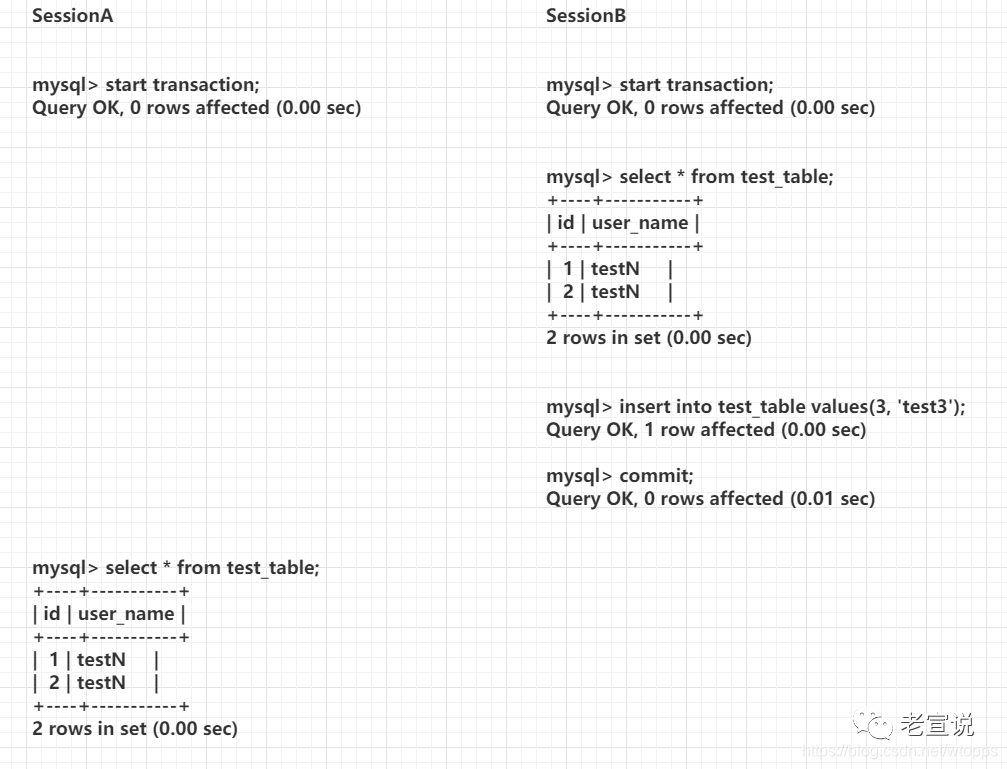
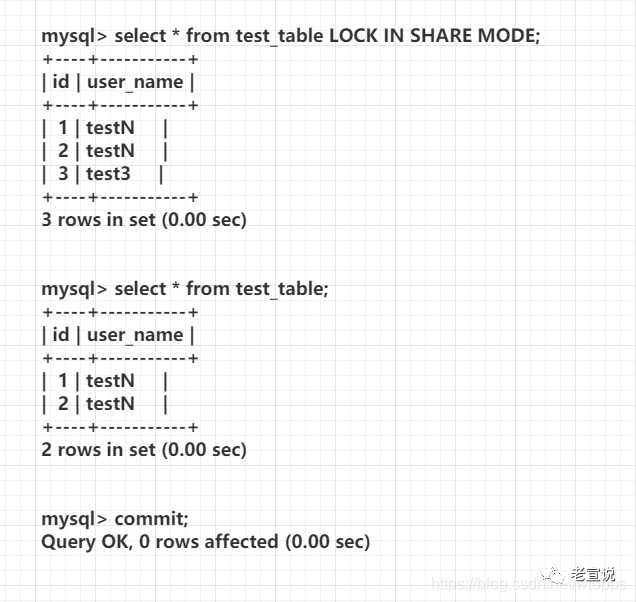
由上面的执行结果可以看到,如果使用普通的读(MVCC),会得到一致性的结果;
结论
next-key locks可以避免幻读。
文章转载自老宣说,如果涉嫌侵权,请发送邮件至:contact@modb.pro进行举报,并提供相关证据,一经查实,墨天轮将立刻删除相关内容。






